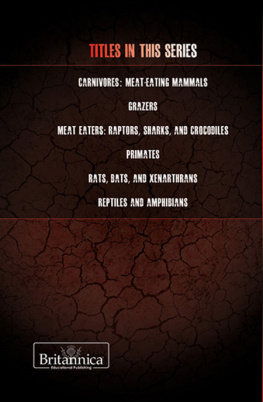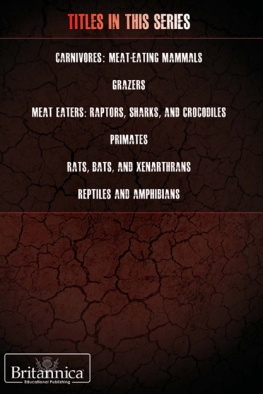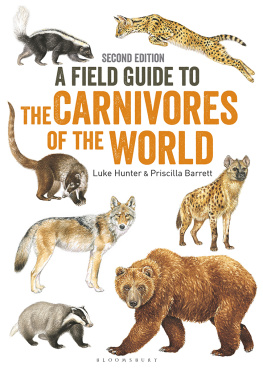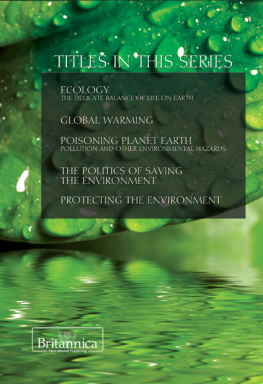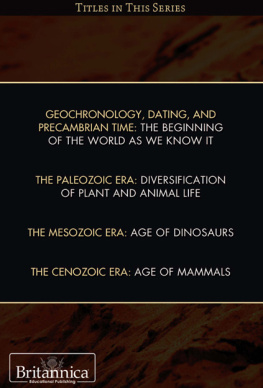CARNIVORES
MEAT-EATING MAMMALS
THE BRITANNICA GUIDE TO PREDATORS AND PREY
CARNIVORES
MEAT-EATING MAMMALS
EDITED BY JOHN P. RAFFERTY, ASSOCIATE EDITOR, EARTH AND LIFE SCIENCES

Published in 2011 by Britannica Educational Publishing
(a trademark of Encyclopdia Britannica, Inc.)
in association with Rosen Educational Services, LLC
29 East 21st Street, New York, NY 10010.
Copyright 2011 Encyclopdia Britannica, Inc. Britannica, Encyclopdia Britannica, and the Thistle logo are registered trademarks of Encyclopdia Britannica, Inc. All rights reserved.
Rosen Educational Services materials copyright 2011 Rosen Educational Services, LLC.
All rights reserved.
Distributed exclusively by Rosen Educational Services.
For a listing of additional Britannica Educational Publishing titles, call toll free (800) 237-9932.
First Edition
Britannica Educational Publishing
Michael I. Levy: Executive Editor
J.E. Luebering: Senior Manager
Marilyn L. Barton: Senior Coordinator, Production Control
Steven Bosco: Director, Editorial Technologies
Lisa S. Braucher: Senior Producer and Data Editor
Yvette Charboneau: Senior Copy Editor
Kathy Nakamura: Manager, Media Acquisition
John P. Rafferty: Associate Editor, Earth and Life Sciences
Rosen Educational Services
Hope Lourie Killcoyne: Senior Editor and Project Manager
Nelson S: Art Director
Cindy Reiman: Photography Manager
Matthew Cauli: Designer, Cover Design
Introduction by Cathy Vanderhoof
Library of Congress Cataloging-in-Publication Data
Carnivores : meat-eating mammals / edited by John P. Rafferty.
p. cm.(The Britannica guide to predators and prey)
In association with Britannica Educational Publishing, Rosen Educational Services.
Includes bibliographical references and index.
ISBN 978-1-61530-385-4 (eBook)
1. CarnivoraJuvenile literature. I. Rafferty, John P.
QL737.C2C347 2011
599.7dc22
2010033864
On the cover: A mature male lion (Panthera leo). Steve Allen/Photodisc/Getty Images
On : The least weasel is the smallest living carnivore. Shutterstock.com
On : Alaskan brown bear. Roy Toft/National Geographic Image Collection/ Getty Images
Banner. www.istockphoto.com/Vladimir Sazonov
CONTENTS

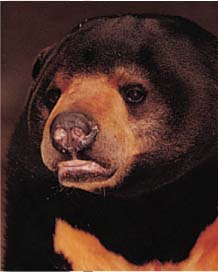
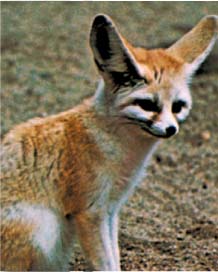

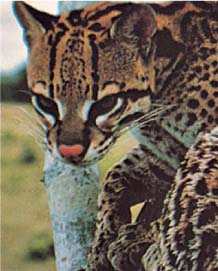
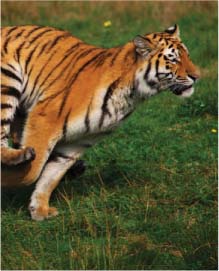

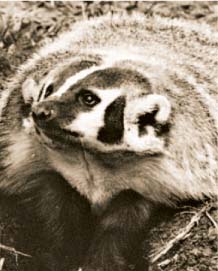
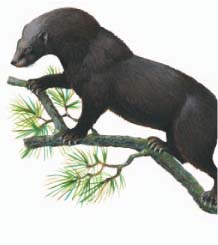

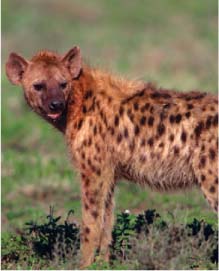
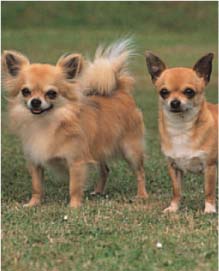

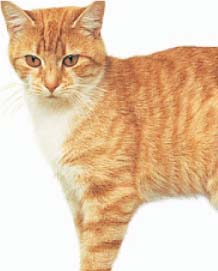
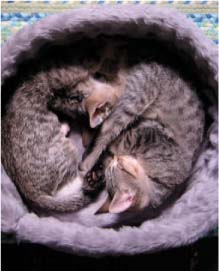
INTRODUCTION

L ions and tigers and bears, oh my! chants Dorothy as she enters the forest of Oz in the classic film The Wizard of Oz (1939). Although you would never actually find all three of these creatures in the same habitat, they are indeed among the small number of carnivorous animals that will attack humans. Carnivores, whose diets are primarily made up of the flesh of other animals, are part of the order Carnivora. However, not all carnivores are threats to humans. In addition to lions, tigers, and bears, the order also includes domestic cats and dogs, as well as otters, foxes, raccoons, meerkats, and a variety of other species. Members of order Carnivora occupy important niches in the ecosystems they inhabit, and some species even serve as top predators.
Many types of birds, reptiles, and fish are also flesh-eating predators, and even some plants are flesh-eaters. However, from a taxonomic perspective, all members of order Carnivora are mammals. Although some aquatic mammals, such as the seals and walruses, are also typically included in order Carnivora, this book presents a detailed study of the terrestrial families of carnivores. Terrestrial carnivores include the Canidae (dogs and related species), Felidae (cats), Ursidae (bears), Procyonidae (raccoons and related species), Mustelidae (weasels, badgers, otters, and related species), Mephitidae (skunks and stink badgers), Herpestidae (mongooses), Viverridae (civets, genets, and related species), and Hyaenidae (hyenas).
Carnivores play an important role in the environment by limiting the populations of the species they prey upon, thus maintaining the balance between the available resources and the populations dependent on those resources within a given ecosystem. Human encroachment on their territories has resulted in a variety of outcomes. In some cases, humans have eliminated or attempted to eliminate animals that prey on domestic livestock or important game animals. Without the checks provided by top carnivores, the populations of prey species, such as white-tailed deer in North America, rise quickly. Prey populations in ecosystems devoid of large carnivores are only limited by their food supply. In such ecosystems, plants are browsed more heavily. In addition, populations of smaller carnivores, such as racoons, coyotes, and foxes, also increase dramatically, because top carnivores are no longer present to interfere with their activities. In other cases, human settlement has disrupted the carnivores natural territories, sometimes to the extent that the carnivore population is eliminated from the region. However, some species, such as the aforementioned smaller carnivores, and even some species of bears, actually adapt to life in suburban and urban areas. Over the course of time, certain carnivore species have been domesticated by humans. Dogs, cats, and even ferrets provide companionship to humans as household pets.
The largest terrestrial carnivores can be found among the bear family. (The Kodiak and polar bears of the Arctic region are the largest bears.) Bears range throughout North America, Europe, and Asia. The spectacled bear of the Andes Mountains is the only living bear found south of the equator. The only known African bear species, the Atlas bear, became extinct more than a century ago. Scientists believe that bears are the most recently evolved family of carnivores, splitting from the Canidae as recently as the Late Miocene Epoch (11.6 million to 5.3 million years ago).
Next page
